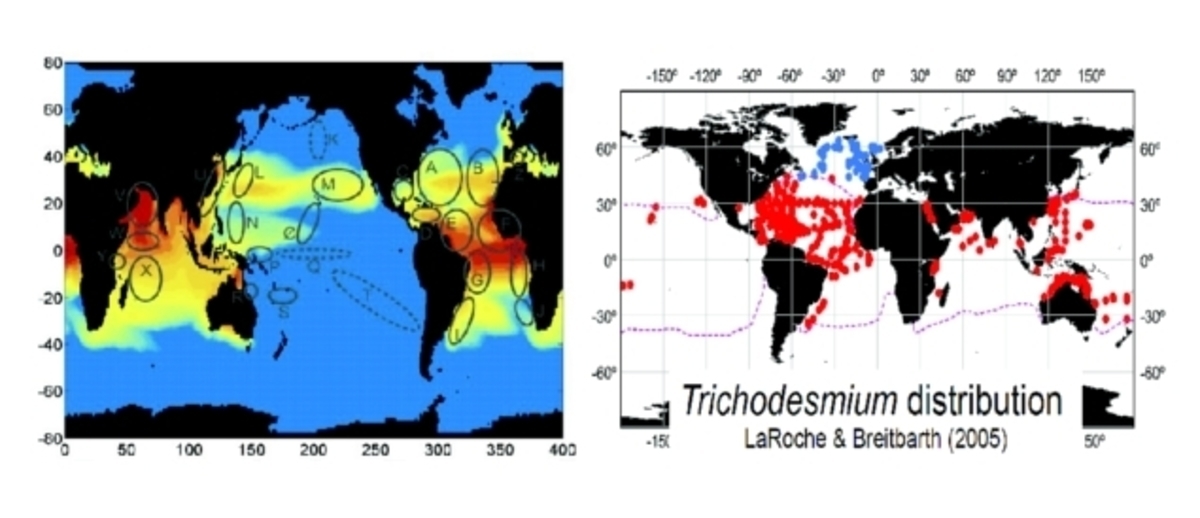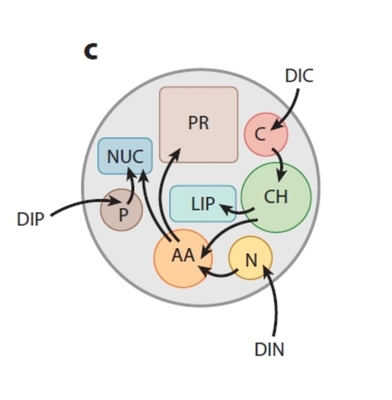Mick Follow's Group
We use models and data analysis to investigate the connections between ocean circulation, biogeochemical cycles and marine ecosystems.
Website:
http://darwinproject.mit.edu/GLOBAL BIOGEOCHEMICAL CYCLES AND CLIMATE
We develop idealised models of marine biogeochemical cycles and their regulation of atmospheric CO2 on climate timescales. How might changes in ocean termperature, productivity and plankton communties regulate atmospheric CO2 on climatic timescales?

REFERENCE:
Omta, A. W., S. Dutkiewicz, and M. J. Follows (2011) Dependence of the ocean-atmosphere partitioning of carbon on temperature and alkalinity Glob. Biogeochem. Cyc. 25:GB1003 doi:10.1029/2010GB003839.
HOW ARE MARINE PHYTOPLANKTON COMMUNITIES SHAPED BY, AND HOW DO THEY FEEDBACK UPON, THEIR ENVIRONMENT?
We seek to answer this question using a combination of numerical models, ecological theory and data analysis.

You can read about a marine ecosystem model with self-assembling community structure here.
In the same vein we are using this model along with ecological theory to interpret and simulate the distribution of nitrogen fixing phytoplankton in the ocean. You can read about this work here.
These models allow us to examine what shapes the patterns of biodiversity in the ocean environment. You can Read more about this work here.
You can find vizualisations of some of our model results here.
REFERENCE:
Monteiro, FM, Michael J. Follows & Stephanie Dutkiewicz. 'Distribution of diverse nitrogen fixers in the global ocean', Global Biogeochemical Cycles, 24, (pp. 1-16), 2010. ISSN: 0886-6236 doi:10.1029/2009GB003731
TRAITS AND TRADE-OFFS: COSTS AND BENEFITS OF MICROBIAL FUNCTION.
The fitness of marine microbes in any given environment depends upon their inherent set of characteristics or "traits". Energy and nutrient resources are bounded so individuals can only invest in a limited set of functionalities and are thus fittest only in specific environments. To capture these trade-offs appropriatly for eological and biogeochemical simulations we must understand and represent the physiology of individuals.

We are exploring models of marine microbes, which while still tractable for large-scale ecological studies, begin to resolve marine microbial macromolecular composition and the pathways of energy and elements through the cell.
REFERENCE:
Follows, M.J. and S. Dutkiewicz (2011) Modeling diverse communities of marine microbes. Ann. Rev. Marine Sci., 3, 427-451